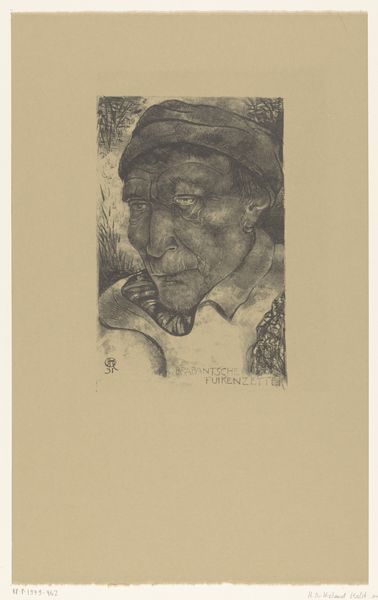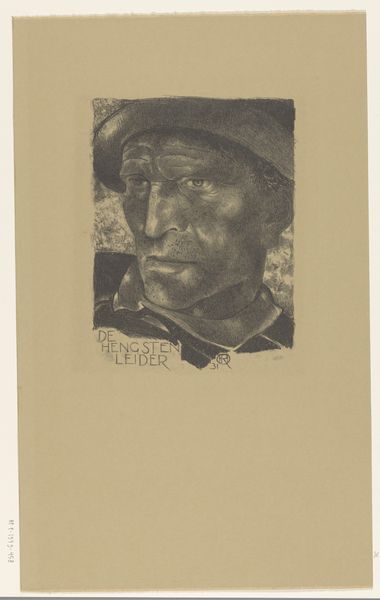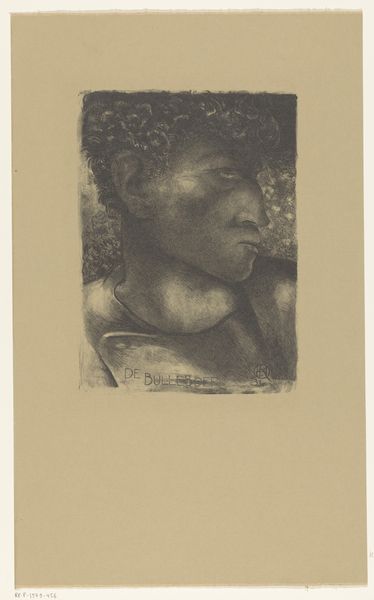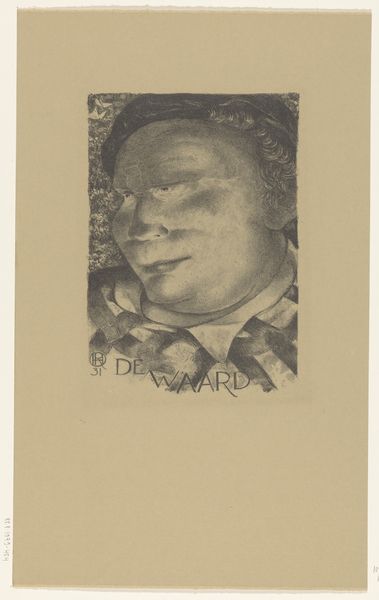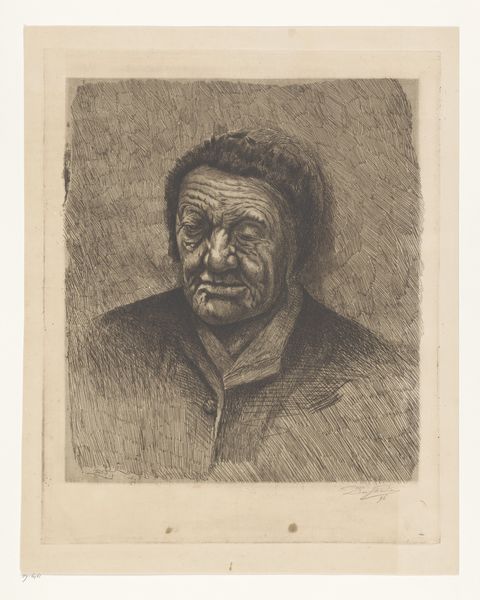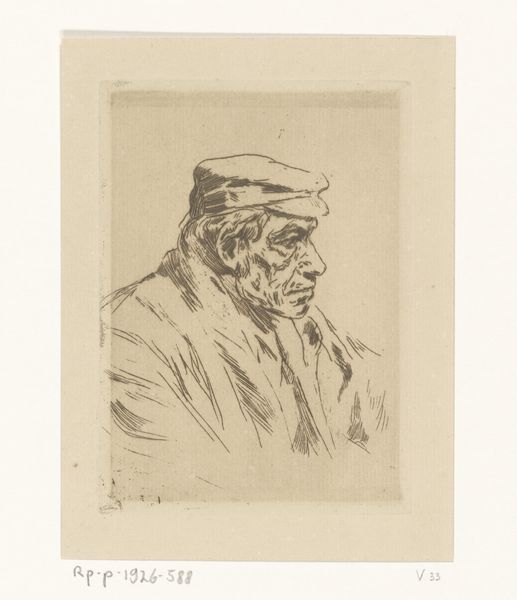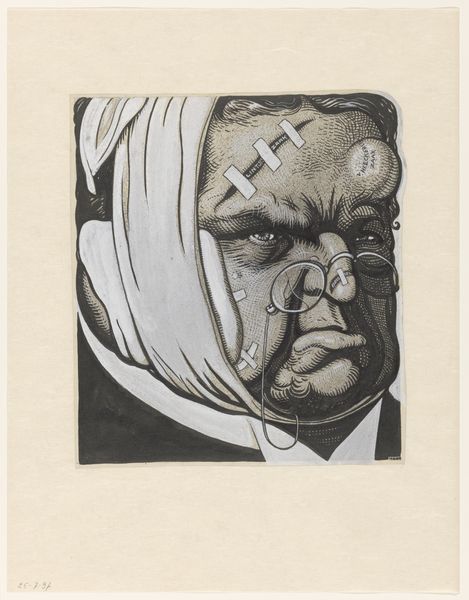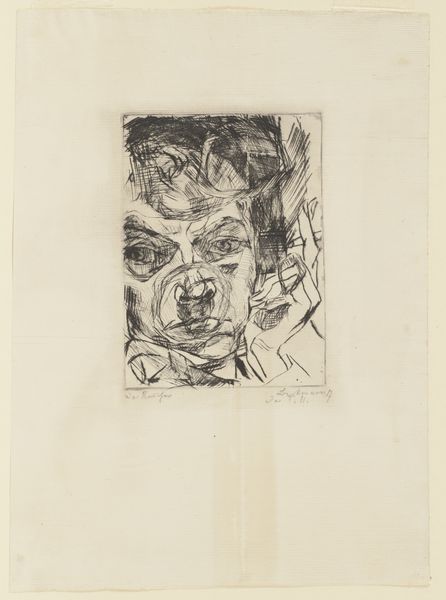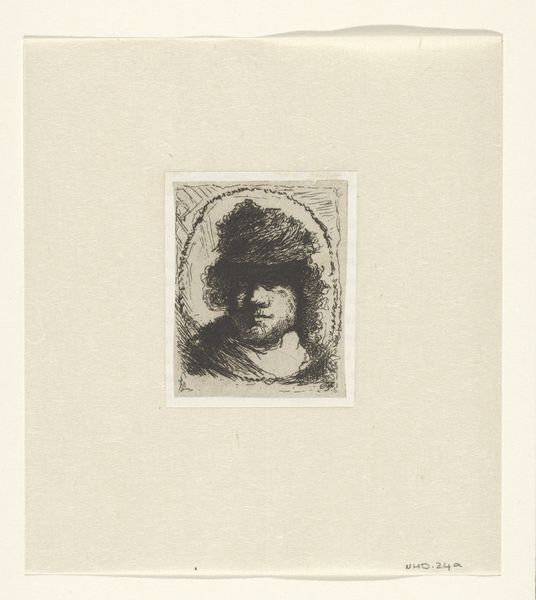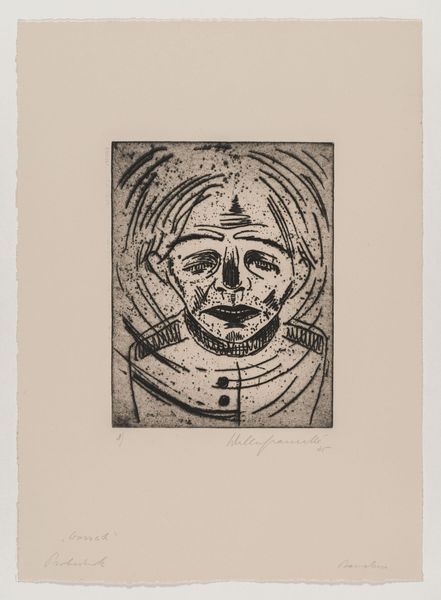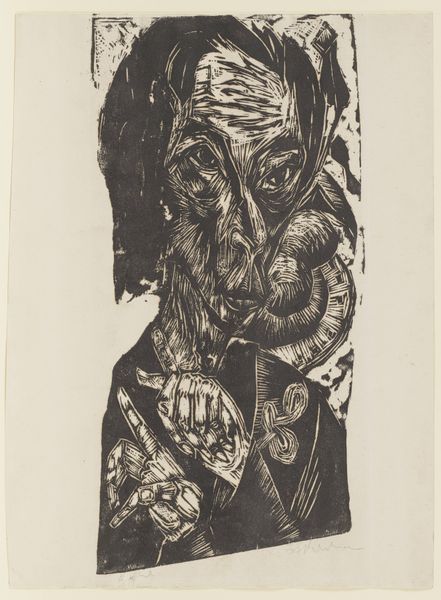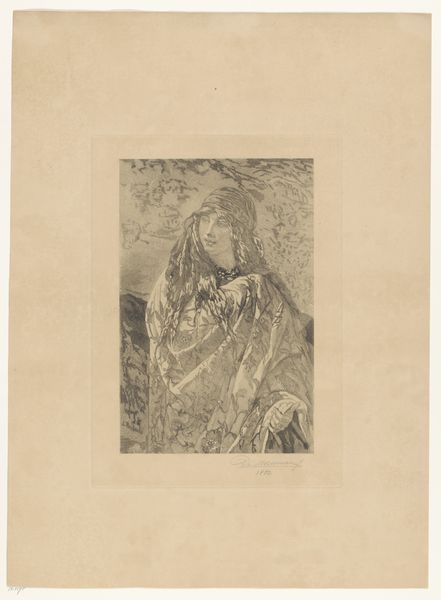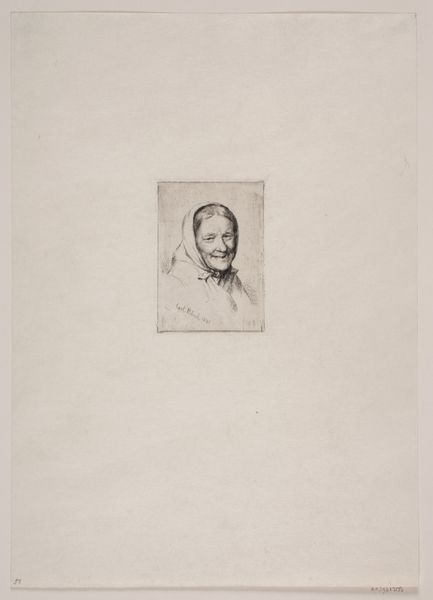
drawing, pencil
#
portrait
#
pencil drawn
#
drawing
#
pencil
#
line
#
realism
Dimensions: height 520 mm, width 322 mm
Copyright: Rijks Museum: Open Domain
Curator: Good morning! Welcome. Here we have Richard Nicolaüs Roland Holst's "De strooper", a pencil drawing from 1931. It resides here at the Rijksmuseum. Editor: Whoa, intense. The weight of the world etched into every line, eh? It feels like looking into a soul weathered by life’s harshest storms. What's with "De strooper", a sort of label, written right in the drawing? Is this his rap sheet? Curator: It’s an older Dutch term for "poacher". Holst was interested in the figure of the working man, and "the poacher" or "De strooper" was a prominent subject at the time, representing both defiance and struggle against landowners. These figures appeared regularly in paintings as figures of empathy in the first half of the 20th century. Editor: Interesting, a rebel yell rendered in pencil. It's less about idealizing heroism, more about grounding it in grit. Holst really captures that tension. What I find amazing, technically, is that sense of tangible reality conveyed so vividly and sparely in line alone. Curator: Holst was indeed deeply engaged in the socialist movements of his time. As a historical symbol the figure certainly reflects broader societal attitudes towards land use and wealth distribution during the interwar period, specifically during The Great Depression years after the global economical crisis, which might explain the raw feel of defiance that strikes us. Editor: Makes you wonder about the ethical tightrope they walked, right? On one hand, you see the struggle, the defiance against systems. Yet poaching also skirts with other themes – environmental stewardship. Does art allow you to empathize even while dissecting morality? I think so! It shows you reality is not so neatly packaged. Curator: Certainly, I agree! And considering its place in the Rijksmuseum’s collection, the artwork serves not only as an aesthetic achievement but also as a reflection of prevailing societal norms and their artistic representations through the years. The politics and economics play a role when evaluating this work today. Editor: I feel like Holst captured not just an image but an unspoken narrative—of struggle, resilience, and humanity’s complicated dance with right and wrong. And maybe even his view on a common debate. Curator: Absolutely. This encounter with “De strooper” definitely underscores how artistic mediums engage with societal discourse. It's fascinating to see how a simple pencil drawing can invite such complex perspectives.
Comments
No comments
Be the first to comment and join the conversation on the ultimate creative platform.
